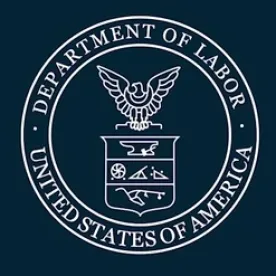On September 8, 2020, the U.S. District Court for the Southern District of New York vacated the U.S. Department of Labor’s (DOL) final joint-employer rule, which limited when multiple businesses involved in an employment relationship could be liable for violations of the Fair Labor Standards Act (FLSA). Although the Final Rule’s test for ‘vertical’ joint employer liability must be set aside under the APA, the Court will permit the Department’s revisions to the ‘horizontal’ joint employment scenario to remain in effect.
The DOL’s final rule set out a four-part balancing test to evaluate “the potential joint employer’s exercise of control over the terms and conditions of the employee’s work.” The test examined whether the potential joint employer ‘(1) [h]ire[d] or fire[d] the employee; (2) supervise[d] and control[ed] the employee’s work schedule or conditions of employment to a substantial degree; (3) determine[d] the employee’s rate and method of payment; and (4) maintain[ed] the employee’s employment records. The final rule aimed to clarify that to be a joint employer under the FLSA, “[t]he other person’s ability, power, or reserved right to act in relation to the employee may be relevant for determining joint employer status, but such ability, power, or right alone does not demonstrate joint employer status without some actual exercise of control.”
The court held in State of New York v. Scalia, No. 1:20-cv-1689-GHW (September 8, 2020), that the final joint-employer rule violated the Administrative Procedure Act because it ignored the FLSA’s interwoven definitions of “employer,” “employee,” and “employ”—definitions that the Supreme Court of the United States has held to be to strikingly broad—in regard to the interpretation of “vertical” joint employers. Vertical joint employment exists when, for example, one employer provides workers through staffing or subcontracting arrangements to another employer, and the workers are primarily controlled by the second employer.
The final rule defined “employer” to parallel the FLSA’s definition, but required that the “actual exercise of control” operate as the touchstone of the joint-employer analysis. By so limiting what it means to be an employer, the court explained, “[t]he Final Rule exclude[d] certain employer characteristics as irrelevant to the joint employer analysis.” For example, the analysis “render[ed] irrelevant … ‘certain business models (such as a franchise model), certain business practices (such as allowing the operation of a store on one’s premises), and certain contractual agreements (such as requiring a party in a contract to institute sexual harassment policies)[.]’” The court held that because the FLSA’s definition of “employ” is to “suffer or permit to work” and therefore is necessarily broad, limiting these specific and other unspecified scenarios from the joint-employer analysis “contradict[ed] the plain text of the FLSA.”
Moreover, the court found that the DOL had “failed to adequately justify its departure from its prior interpretations and to account for some of the Final Rule’s important costs.” Such a departure, the court held, rendered the DOL’s final rule “arbitrary and capricious.”
While the court’s holding seems to be jurisdictionally limited to the Southern District of New York, it opens the door for similar actions in other circuits to emerge and challenge the DOL’s joint-employer final rule.



 />i
/>i

